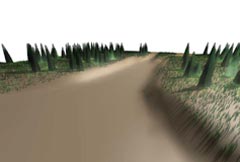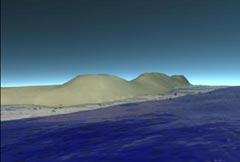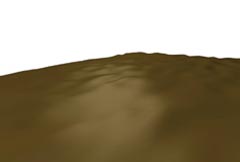
|
|
Estuaries
|
|||||||||||||
Classifying Estuaries - By Geology |
coastal plain | bar-built | deltas | tectonic | fjords
The features of an estuary are determined by a region's geology, and influenced by physical, chemical, and climatic conditions. For example, movements in the Earth’s crust elevate or lower the coastline, changing the amount of seawater that enters an estuary from the ocean. The coastal elevation also determines the rate of fresh water that flows into an estuary from rivers and streams. The amounts of seawater and fresh water flowing into an estuary are never constant. The quantity of seawater in an estuary changes with the changing tides, and the quantity of fresh water flowing into an estuary increases and decreases with rainfall and snowmelt.
Classification by Geology
Estuaries are typically classified by their existing geology or their geologic origins (in other words, how they were formed). The five major types of estuaries classified by their geology are coastal plain, bar-built, deltas, tectonic and fjords. In geologic time, which is often measured on scales of hundreds of thousands to millions of years, estuaries are often fleeting features of the landscape. In fact, most estuaries are less than 10,000 years old (Levinton, 1995).
Coastal plain estuaries, or drowned river valleys, are formed when rising sea levels flood existing river valleys. Bar-built estuaries are characterized by barrier beaches or islands that form parallel to the coastline and separate the estuary from the ocean. Barrier beaches and islands are formed by the accumulation of sand or sediments deposited by ocean waves.
A delta, characterized by large, flat, fan-shaped deposits of sediment at the mouth of a river, occurs when sediments accumulate more rapidly than ocean currents can carry them away. When the Earth’s tectonic plates run into or fold up underneath each other, they create depressions that form tectonic estuaries. Fjords are steep-walled river valleys created by advancing glaciers, which later became flooded with seawater as the glaciers retreated.
(top)
|
|
|
|
Tutorial PDF Subject Review Welcome
|




